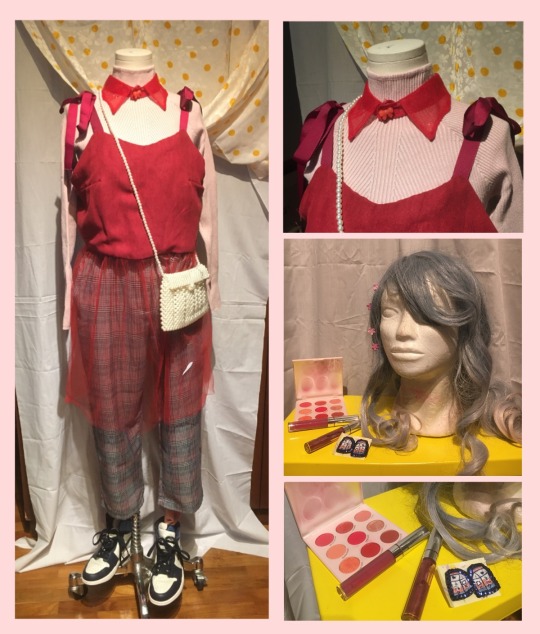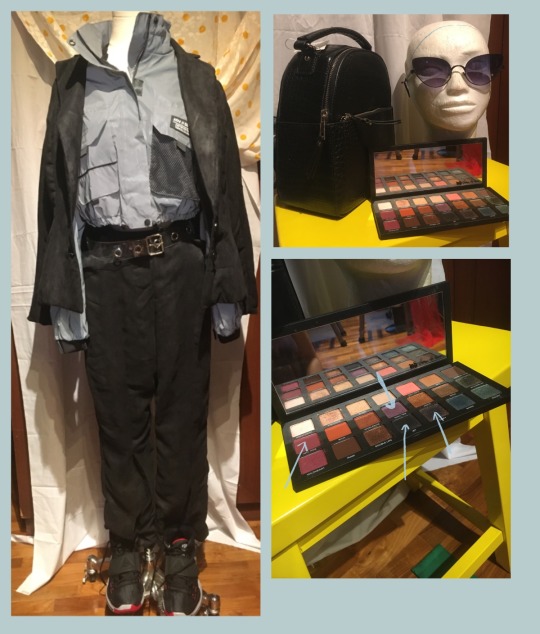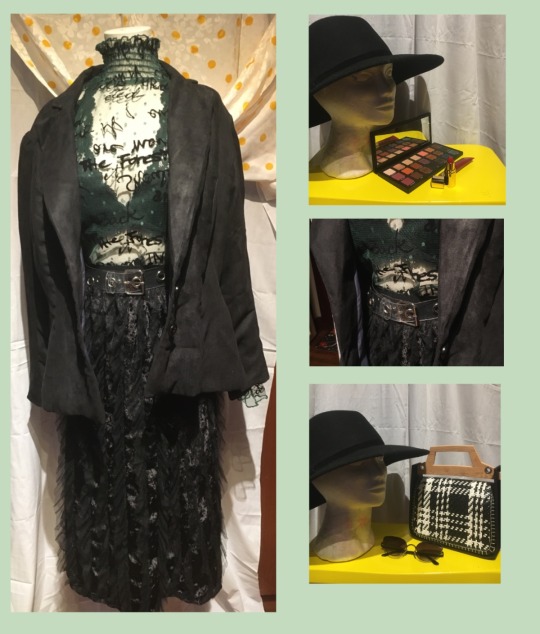#Karasuzoku
Explore tagged Tumblr posts
Text
Crow Tribe・Karasuzoku — PELICAN FANCLUB
English+Romaji Translation
凍りついた怪しい心
kooritsuita ayashii kokoro
An eerie, frozen heart
溶けるわけないか
tokeru wakenai ka
With no chance of melting
悲しい結末ね
kanashii ketsumatsu ne
It's a sad end, isn't it
例えばあの子にでたらめな言葉を使って追いかける
tatoeba anoko ni detarame na kotoba wo tsukatte oikakeru
Like chasing after that one's nonsensical words
シンデレラ あまりにも白すぎる
shinderera amari ni mo shiro sugiru
Cinderella is far too white
凍りついた怪しい心
kooritsuita ayashii kokoro
An eerie, frozen heart
溶けるわけないか
tokeru wakenai ka
With no chance of melting
悲しい結末ね
kanashii ketsumatsu ne
It's a sad end, isn't it
例えばあの子にでたらめな言葉を使って追いかける
tatoeba anoko ni detarame na kotoba wo tsukatte oikakeru
Like chasing after that one's nonsensical words
シンデレラ あまりにも白すぎる
shinderera amari ni mo shiro sugiru
Cinderella is too white
甘いな 全てをなめてる
amai na subete wo nameteru
You're naive. You're underestimating it all
脳が気にいらない
nou ga ki ni iranai
I don't care for your mind
誰かのせいだ
dareka no sei da
It's somebody else's fault
顔が見当たらないけど
kao ga miataranai kedo
Although I can't place their face
黒い季節だ 夢中で駆け出した
kuroi kisetsu da muchuu de kakedashita
Through a dark season I ran off in a daze
例えばあの子にでたらめな言葉を使って追いかける
tatoeba anoko ni detarame na kotoba wo tsukatte oikakeru
Like chasing after that one's nonsensical words
シンデレラ 季節とずれていく
shinderera kisetsu to zureteiku
Cinderella is out of season
甘いな 全てをなめてるのが気にいらない
amai na subete wo nameteru no ga ki ni iranai
You're naive. You're underestimating it all, I don't care for it
急いで全てが間に合わない
isoide subete ga ma ni awanai
I have to hurry or I won't make it in time for anything
こんなはずじゃなかった
konna hazu janakatta
It wasn't supposed to be like this
誰かが言う
dareka ga iu
Somebody says
「死ぬことは生きることの反対じゃない」
shinu koto wa ikiru kito no hantai ja nai
"Dying is not the opposite of living."
誰かが言う
dareka ga iu
Somebody says
「死ぬことは生きることの反対じゃない」
shinu koto wa ikiru kito no hantai ja nai
"Dying is not the opposite of living."
誰かが言う
dareka ga iu
Somebody says
「死ぬことは生きることの反対じゃない」
shinu koto wa ikiru kito no hantai ja nai
"Dying is not the opposite of living."
誰かが言う
dareka ga iu
Somebody says
「死ぬことは生きることの反対じゃない」
shinu koto wa ikiru kito no hantai ja nai
"Dying is not the opposite of living."
I translated the title literally but it probably refers to a fashion style of wearing all black that was popular in the 80's. Search for カラス族 images.
0 notes
Text
Tokyo Street Styling: The Aesthetics of Japanese Street Fashion
a.k.a. why do some outfits have a ‘very Japanese’ aesthetic and others don’t?
If you’ve ever scrolled through the TokyoFashion instagram, you’d see outfits of all types and styles, ranging from the ‘classic’ harajuku staples like decora and lolita to the more street-style based coords of which an overall style is yet to be properly named.
Over the years that I’ve been an observer and a follower of these styles, I’ve noticed a gradual but significant decrease in actual Japanese people wearing the ‘classic’ sub-styles and more and more venturing into the realm of the nameless umbrella which is ‘tokyo street fashion’.
And yet harajuku fashion isn’t really dying, it’s transforming into something completely new (mentioned in this post). And what interests me the most is how these new styles are so different from the so-called OG sub-styles and yet are distinctly Japanese.
So this post will attempt to talk about that in as short of a post as I can manage
This other post already mentions the basics of Japanese street style so I won’t go over that in much detail again.
❀❀❀
First, a quick background of Japanese colours.
Japanese colours in the Edo period were originally split into three categories:
The Colours of Animals
The Botanical Colours
The Colours of Nature
And these colours in varying proportions would evoke certain seasons or feelings. Some colours are tied to spring, others to autumn. And borrowing from confucianism and taosim, there are colours that are tied to specific elements.
Nowadays, these are not completely strictly adhered to, since the West introduced their own colour theory after the Edo period, but there is a lot of the original colour theory of Japan that is still relevant in their aesthetics today.
Sources: 1, 2
❀❀❀
Next, a quick introduction to some of the main concepts of Japanese aesthetics:
♔ Wabi-sabi
The idea of embracing transience and change, but also imperfection and incomplete objects, as it is natural. Think of the sakura that only blooms for a short while, the idea of things growing, flowering and then decaying, and finding beauty and peace in that process is part of wabi-sabi.
♔ Yūgen
Referring to “something dim, deep and mysterious, something that cannot be understood”. The Japanese also don’t believe this feeling can be expressed in words, but I think the closest explanation is a sense of profound melancholy and gentle grace.
(Think of mode, karasuzoku, outfits by Rei Kawakubo, can possibly be applied to mori kei)
♔ Iki
A combination of intellectuality and sensibility. It is simplicity and sophistication, or maybe even sophistication in simplicity. It refers to the unselfconscious, measured and straightforward. It usually is used to relate to a person, but we shall see how it applies to fashion in a bit.
(Mori kei is the first thing that comes to mind, but also pop kei and classic lolita)
♔ Shibui
The aesthetic of simplicity and unobtrusiveness. Shibui refers to things that are overall simple, but when observed more closely are detailed and textured and refined. It has a balance of complexity and simplicity.
And of course the most important one to this context:
♔ Kawaii
The concept of cuteness and being loveable, found in most Japanese street fashion.
I find that these, in their various combinations and proportions, make up a lot of what is Tokyo Street Fashion.
Sources: 1, Aesthetics of Colours in Japanese Paintings and Woodblock Prints in the Edo Period (Siying Wang)
❀❀❀
So. How does this all apply to fashion?
I’m going to use some examples here to describe what I mean.
♔ Strawberry Candy Outfit

I call this the strawberry candy outfit because it is indeed the colours of a strawberry candy. So outfit breakdown: why is this an example of Japanese street fashion?
Firstly, the use of layering textures and sheers is a common part of Tokyo street style, as well as the use of colour blocking. The overall colour palette is based around pink, so the makeup and accessories would match that, and the blueish-grey of the hair and the blue accents on the shoes and the earrings provide the littlest bit of contrast.
So colourwise, I’ve decided to use pink as my main colour, and the red, white and grey are all secondary to that, though by playing with proportion, I can ‘even out’ the amount of pink and make it less overwhelming. Pink is made of red and white, so I broke apart the red and white, and then added grey to make the look more neutral, but also feminine.
The main aesthetic concepts I am following here are Shibui and Kawaii. There’s an overall cute energy that comes from the bows, red tulle and pearls. And yet it’s a very balanced look, not overly cute. The idea is to play with the textures and patterns to give it more dimension.
♔ The Utilitarian Office Lady

This coord is based around a monochrome palette, the suit is made of a pair of flared trousers and a boxy jacket, which on its own can make a cool base for a karasuzoku outfit or a mode outfit.
But here I layered the suit jacket over another jacket of reflective grey fabric, with a lot of utilitarian elements to it, and also added a plastic belt with grommets punched into it. The hair could just be a really long sleek ponytail, and the faux reptile skin backpack and dark makeup would go nicely to give it more of a street-style edge. The shoes are black Nike Kyrie 6 EPs but really any chunky black sneaker will do.
This one is more following the aesthetics of Shibui and Iki. It’s unobtrusive in the way that it is sleek and monochromatic, but it’s also very detailed in all the contracting sheen and texture of the outfit. The matte suede of the suit with the reflective polyester of the jacket, as well as the reptile skin and the mesh. There’s a subtle contrast there.
This outfit, I would say is very straightforward and simple, but there are so many interesting layers about it that give it more dimension and personality.
♔ The Edgy Gyaru

This outfit is inspired by the modern gyaru. The sheer top can easily be paired with a shorter skirt and knee high boots to be Even More Gyaru, but I’m going with this skirt because I find it more interesting. This outfit leans more towards the Rokku Gyaru sub-style, and would go with light ash grey coloured hair and the typical gyaru makeup.
This look is a mostly Iki sort of aesthetic. There’s a sexier type of sophistication in this look, and it’s mostly in dark muted colours, but the details make it far more interesting than it first seems.
This is the most ‘mild’ of the looks I’ve shown here, and it’s largely because this one has the most western influence. This look will be a lot more tokyo street with the makeup and the hair styling factored in, but just as it is, it’s actually more of a blank slate.
❀❀❀
If you’ve read this far, thank you! It’s been a long post, but to conclude:
The world is becoming very interconnected and very globalised. Which is great for spreading word of a style or a trend, not so great for maintaining the so called ‘purity’ of that style or trend. And as styles and trends progress over time, they can die out, they can change into something new, and I am of the opinion that that change should be welcomed.
However, we can’t forget where the original trend came from or where the style evolved to add another layer on top of an older trend or to completely reject it and become something even newer and unseen.
Other countries and cultures have been adopting Japanese aesthetics into their street culture ever since the ‘big 3’ of Japanese designers were introduced to the world in the 80s. There are elements of Japanese street style in Parisian and New York streetwear, just as there are western influences in Japanese street style.
In fact South Korean, Chinese and Japanese street style is becoming more and more homogenous, and sometimes it takes me a while to even figure out where the specific outfit i’m about to share is from.
I hope this post was helpful in explaining how to spot the core aesthetics that make Japanese fashion so Japanese, and I hope you, my dear readers, can use this info to craft your own outfits.
The traditional Japanese colours and aesthetics aren’t a hard and fast rule, but if you want to dress more to the style, it’s a pretty good guideline to really ensure you’ve got the coord right.
#tokyo street style#tokyo street fashion#japanese street style#japanese aesthetics#street fashion#styling tips#verdant talks#verdant styles
8 notes
·
View notes
Photo




カラス族 (karasu-zoku) or Yohji Yamamoto & Comme des garçons 80′s tribe des corbes. Inspired by beatnicks and a major influence for ninja goth in nowadays
219 notes
·
View notes

